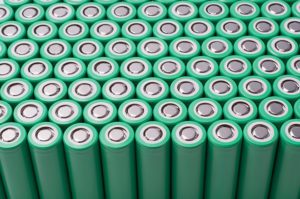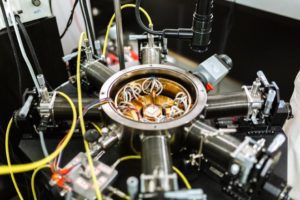Researchers from the Samsung Advanced Institute of Technology (SAIT) and the Samsung R&D Institute Japan (SRJ) have published a study on high-performance, long-lasting all-solid-state batteries in the journal Nature Energy. Compared to lithium-ion batteries, which employ volatile liquid electrolytes, all-solid-state batteries use non-volatile solid electrolytes that support greater energy density. However, their lithium metal anodes… Read more »
Search Results Found For: "NANO ONE"
UC San Diego’s research roadmap for the challenges of solid-state batteries
The race is on to develop batteries that are less expensive, safer, longer-lasting, more energy-dense, and easily recyclable. All-solid-state batteries show promise, but obstacles to their wide-scale adoption remain. In a review article published in Nature Nanotechnology, nanoengineers at the University of California San Diego (UCSD) offer a research roadmap that discusses four challenges of… Read more »
MIT team develops novel solid electrolytes and pure lithium anodes
New research from MIT could lead to batteries that pack more power per pound and last longer. A new paper co-authored by Yuming Chen and Ziqiang Wang at MIT explores the idea of using pure lithium as the battery’s anode. The design is part of a concept for developing safe solid-state batteries by dispensing with… Read more »
Thermal conductive materials in electrical insulation
Sponsored by ELANTAS PDG, Inc. Thermal conductive materials are increasingly important in electrical and electronic applications as heat management is critical to improving performance and efficiency of today’s modern equipment. ELANTAS provides an industry-leading, global portfolio of products to manage thermal dissipation in applications as diverse as motor impregnation, component encapsulation, gap fillers and thermal interface… Read more »
Nexeon acquires 24 patents for silicon anodes
Silicon anode specialist Nexeon has acquired three sets of patents relating to the use of silicon in lithium-ion battery anodes. The 24 patents cover the manufacture and use of nano-scale silicon particles, alone or combined with graphite, as well as methods for coating carbon particles with silicon using vapor deposition. The patents have global coverage,… Read more »
Airbus invests in battery tech company Amprius
Airbus has invested in US-based battery technology company Amprius. Amprius will direct the funding to its new batteries based on silicon nanowire anode technology, supporting the development of higher-volume production capacity and higher energy density cells. Airbus aerospace programs such as Zephyr High Altitude Pseudo Satellite and Urban Air Mobility stand to benefit from improved… Read more »
PNNL scientists pinpoint cause of dendrites in lithium batteries
Scientists at the DOE’s Pacific Northwest National Lab have uncovered a “root” cause of the growth of needle-like structures – known as dendrites and whiskers – that plague lithium batteries and can cause short circuit, failure, and even fire. Dendrites are tiny, rigid tree-like structures that can grow inside a lithium battery. Their needle-like projections… Read more »
Study at University of Texas demonstrates silicon’s ability to harvest energy from heat
A team from the University of Texas at Dallas has teamed up with Texas Instruments to demonstrate silicon’s ability to harvest energy from heat while still remaining mass-producible. “In a general sense, waste heat is everywhere: the heat your car engine generates, for example,” said Mark Lee, head of UT Dallas’s Department of Physics and… Read more »
Read past issues of Charged – Electric Vehicles Magazine
Issue 67: January-March 2024 Featuring: Issue 66: October-December 2023 Featuring: Issue 65: July-Sep 2023 Featuring: Issue 64: April-June 2023 Featuring: Issue 63: January-March 2023 Featuring: Issue 62: October-December 2022 Featuring: Issue 61: July-September 2022 Featuring: Issue 60: April-June 2022 Featuring: Issue 59: January-March 2022 Featuring: Issue 58 – November/December 2021 Featuring: Issue 57 – September/October… Read more »
MIT researchers demonstrate new way to make thin-film lithium-rich ceramic electrolytes
Researchers at MIT have come up with a new pulsed laser deposition technique to make thinner lithium electrolytes using less heat, which they say promises faster charging and potentially higher-voltage solid-state lithium-ion batteries. Key to the new technique for processing the solid-state battery electrolyte is alternating layers of the active electrolyte lithium garnet component (LLZO)… Read more »












